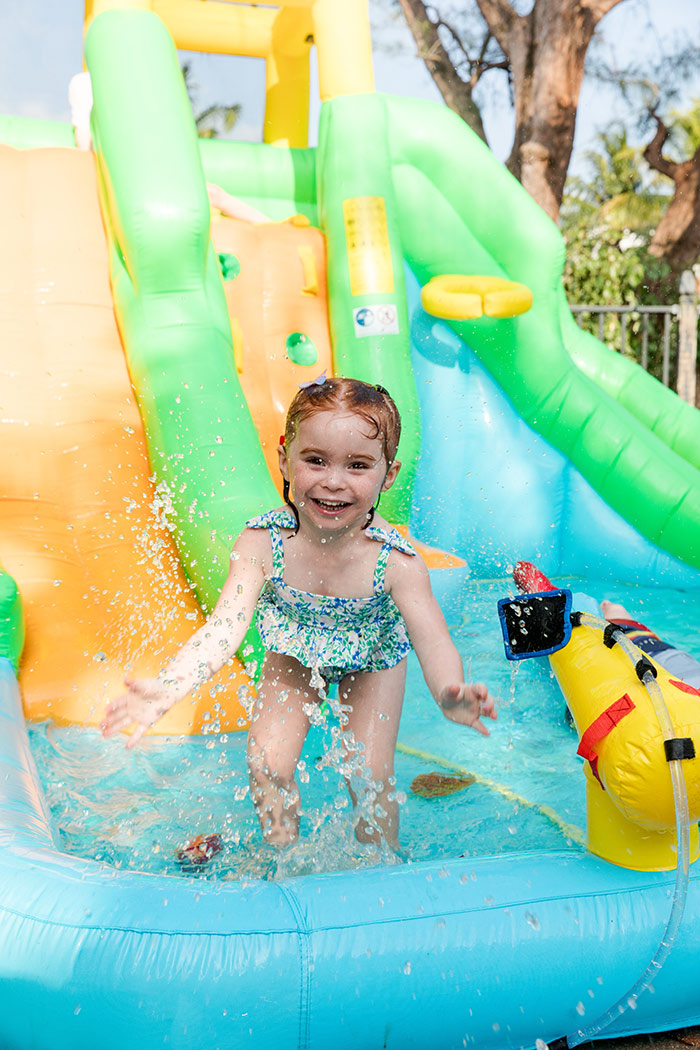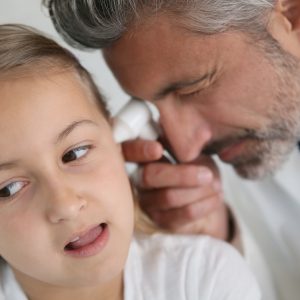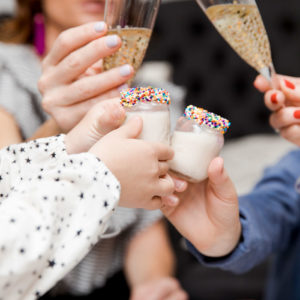
3 Common Ear Issues for Kids {and Easy DIY Fixes}
Ear pain is no joke! It’s awful watching your child in any type of pain, but ear pain can be one of the worst! Believe it or not, ear aliments are very common complaints in the pediatric emergency room. But could DIY ear drops for kids turn everything around?!
3 Types of Common Ear Ailments
The good news is that many ear issues really can be addressed or even prevented at home!
Today I’m giving you some amazing DIY treatments and ear drops for kids that can help with 3 common ear issues.
1. Swimmer’s Ear (Otitis Externa)
Beach days and pool days are just around the corner. But before you head out for a day of swimming, be prepared! Long exposure to chlorine and water breaks down the barrier in the inner ear that helps protect us from bacteria. If your child is going to be in water for a prolonged amount of time, make sure you take steps to prevent swimmer’s ear.
Swimmer’s ear is an infection of the skin covering the outer ear and ear canal and is caused by bacteria such as Staphylococcus aureus and Pseudomonas aeruginosa.
Your child may start to complain of an itch in his or her ear which quickly progresses to extreme pain, especially when pulling on the ear.
It typically is NOT associated with a fever, unlike most ear infections. It is easily treatable but often results in emergency room visits because of the severity of the pain.
~ Homemade Ear Drops for Prevention and Treatment
There are ways to help prevent this infection from occurring. Try to keep the ears as dry as possible. Make sure to towel dry the inside of the ear and tilt the ear to the side to allow water to drain out.
Creating inexpensive and preventative ear drops at home is easy! Just mix together white vinegar and rubbing alcohol in equal parts (1:1 mixture). This solution will increase the rate of evaporation of water in the ear canal.
You can also use mineral oil ear drops to prevent swimmer’s ear. Putting a few drops of mineral oil in your child’s ears before swimming can help serve as a barrier against the water.
~ Antibiotic Ear Drops
Children often require antibiotic drops or steroid drops to treat swimmer’s ear. So it is important to have your child evaluated by their pediatrician if they experience ear pain.
2. Clogged Ears
Many children come to the ER with the complaint of clogged ears. Sometimes it is hard to determine whether your child’s ears are impacted or not.
Children often complain about the sensation of fullness in the ear, popping noises in the ear, or a change in their hearing (muffled). Typically, wax impaction will not cause ear pain, but it can cause itchy ears.
NEVER use a Q-tip to clean your child’s ear.
Q-tips can cause accidental injury to the ear canal or tympanic membrane.
~ Hydrogen Peroxide DIY Ear Drops
Try mixing hydrogen peroxide with a little warm water. Make sure your water is not too hot, or it may burn your child’s ear. Test the temperature on the back of your hand.
Have your child lie on the side with the ear you are trying to treat facing up. Apply one or two drops of the solution into your child’s ear using a dropper. Make sure your child lies with the treated ear facing up for 10 to 15 seconds to remedy the blockage.
You may have to treat the ear once or twice a day for a couple of days until the wax comes loose and completely clears.
~ Mineral Oil Ear Drops
Mineral oil is a great agent to soften ear wax. Ear wax can be too hard and packed to leave the ear canal naturally. Putting 2-3 drops in the ear helps soften the wax, so it can escape more easily.
3. Newly Pierced Ears
Although adorable, earrings can lead to infection and allergic reactions.
After piercing your child’s ears or when replacing earrings, watch out for signs of inflammation. Inflammation can cause the earring to get stuck inside the skin, which can be painful and lead to infection.
Additionally, many children have allergic reactions to the metal of earrings. Nickel, which is used for many earrings, can cause allergic reactions on the skin. It is best to use a nickel-free, hypoallergenic material such as 14 carat gold or sterling silver.
When cleaning and caring for your child’s earrings, avoid harsh agents such as rubbing alcohol.
Alcohol dries the skin and leads to skin breakdown, becoming a risk for infection. I recommend using a pre-packaged saline solution, if possible, as it remains sterile. Some jewelers also suggest using Bactine.
~ DIY Sea Salt Solution
If you are going to use DIY solution, make sure to make a new solution with each application.
Dissolve 1/4 teaspoon of non-iodized sea salt into one cup of warm distilled water. Apply it to the front and back of the piercing with a clean cotton ball. Twist the earring a few times while it is still wet with the solution.
Final Thoughts on Ear Drops for Kids
Ear drops can be extremely useful. But if your child is experiencing pain, local erythema, swelling, drainage, change in hearing, or any symptoms that are persistent in nature, have them evaluated by their doctor.
~Dr. Katie




